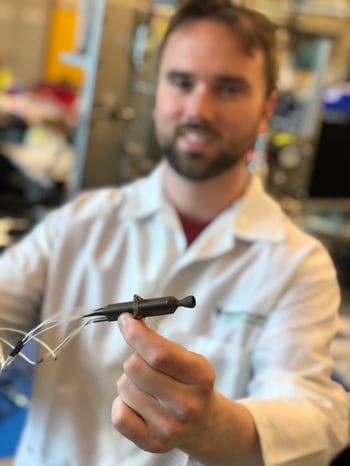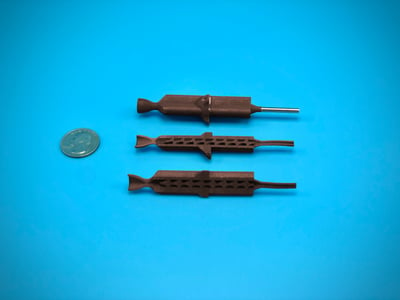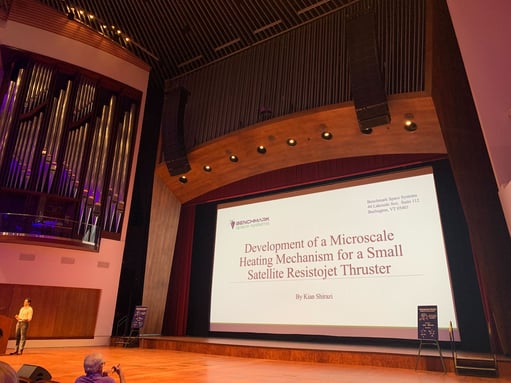Resistojet Thruster Technology Q&A with Propulsion Product Engineer, Matt Walton
Benchmark has developed an innovative twist on resistojet technology. We recently sat down with Matt Walton, Benchmark's Propulsion Product Engineer, to understand the implications of this technology and how it can improve our customers' missions.
What is resistojet thruster technology?
A resistojet is a type of electrothermal propulsion, which means we’re heating up a propellant with an electric heater. By increasing the temperature of the working fluid, you increase the amount of energy that is available to convert into useful thrust. In practice that additional energy manifests as higher specific impulse, or fuel efficiency.
Why is this development groundbreaking to our industry?
In a resistojet you are usually trying to heat up a high velocity, laminar flow. That means you get very little contact time and are only able to heat the section of the flow in contact with the heating surface. Normally this is combatted by increasing the length of the heat exchanger flow path, which increases the size and mass of your thruster.
We’ve come up with a solution to this problem that focuses on improved mixing of the flow. The design induces vortices as the flow travels down the heat exchanger and spreads heat evenly throughout the flow. The result is a resistojet design that has been shown to deliver over 40% greater Isp (specific impulse) gains than a cylindrical laminar flow heat exchanger of the same package. Essentially, this breakthrough greatly improves the efficiency of the electrical power utilization – analogous to adding 40% range to a Model 3 Tesla from 275 to 385 miles. Space operators are even more eager to extend their range metric (Total Impulse) than automobile manufacturers and owners.
The technology is currently TRL 7, and flight units are undergoing acceptance testing for customer delivery later this year. Our solution uses commercially available components and additive manufacturing so it's readily adaptable to different customer needs including thrust level, power level, and even propellant. The nature of the design lends itself to a much wider thrust range than typical electric propulsion on the market, from 5 mN to 100 mN or beyond.
What applications will this technology enable or improve?
This technology allows us to offer a “high efficiency” version of our Starling gas system product line by using electrical power from the spacecraft. A spacecraft operator can choose how much power they have available to dedicate to the propulsion system and balance against their mission requirements. Depending on thrust requirements and power available we’re able to offer up to 100% increase in Isp over cold gas, from 70 to 140 s of Isp with both our ODPS (On Demand Pressurization System™) and pre-pressurized system configurations. Higher specific impulse is possible with other propellants.
Many times, during a propulsive maneuver, mission operations put primary payloads and other subsystems into standby mode and therefore have excess or overhead power. In cases where 25-100W of power will be available during maneuvering, a resistojet becomes an attractive option to consider. Practically speaking that means a spacecraft operator can increase the Total Impulse or Delta-V (range) capability of an existing system or leverage this technology to down-size the propulsion system for mass or volume savings without compromising their mobility requirements.
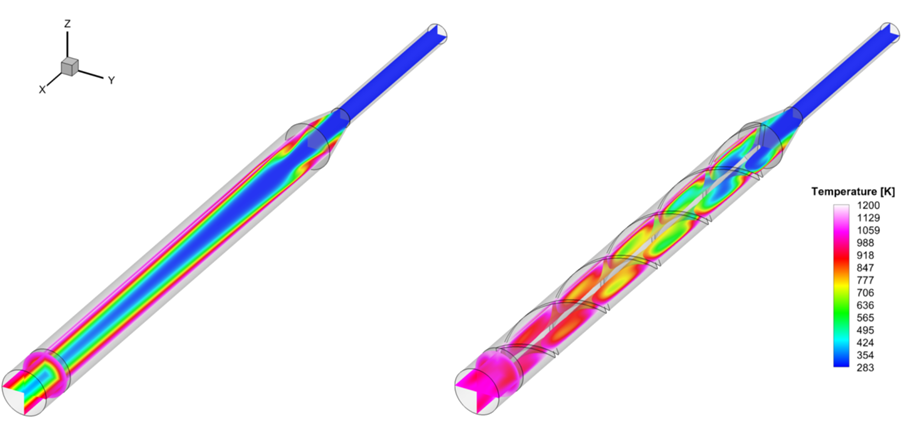
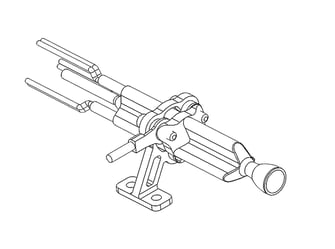
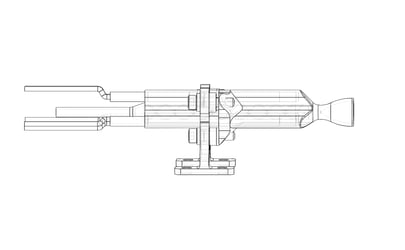
Why was the Benchmark team uniquely qualified to develop this technology?
Benchmark has a history of designing, analyzing, and testing microfluidic systems and novel mixing techniques. Our Peregrine hypergol technology, for example, uses a patented micromixing technique for achieving combustion at low flow rates. While the actual mechanics of the resistojet are very different from this hypergolic micromixing, the team was able to combine that expertise with our cold gas thruster technology and come up with a design that is efficient and adaptable. We’ve also been leveraging advances in additive manufacturing for years and have experience qualifying 3D printed components for flight. That allowed us to add intricate features without adding manufacturing complexity and significant costs to this thruster.
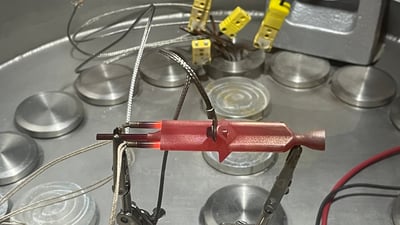 Anything else you would like to share?
Anything else you would like to share?
What I really love about this new thruster is how it fills out the Benchmark product line and gives customers more dials to turn when looking for an in-space mobility solution. It really adds continuity across the Benchmark product range and ensures that we can work with customers to configure a propulsion system for whatever they want to do.
View Resistojet Project Data featured on NASA TechPort
For additional, detailed information watch the presentation "Development of a Microscale Heating Mechanism for a Small Satellite Resistojet Thruster" by Kian Shirazi at the CubeSat Developer's Workshop in April 2022.
.png)
